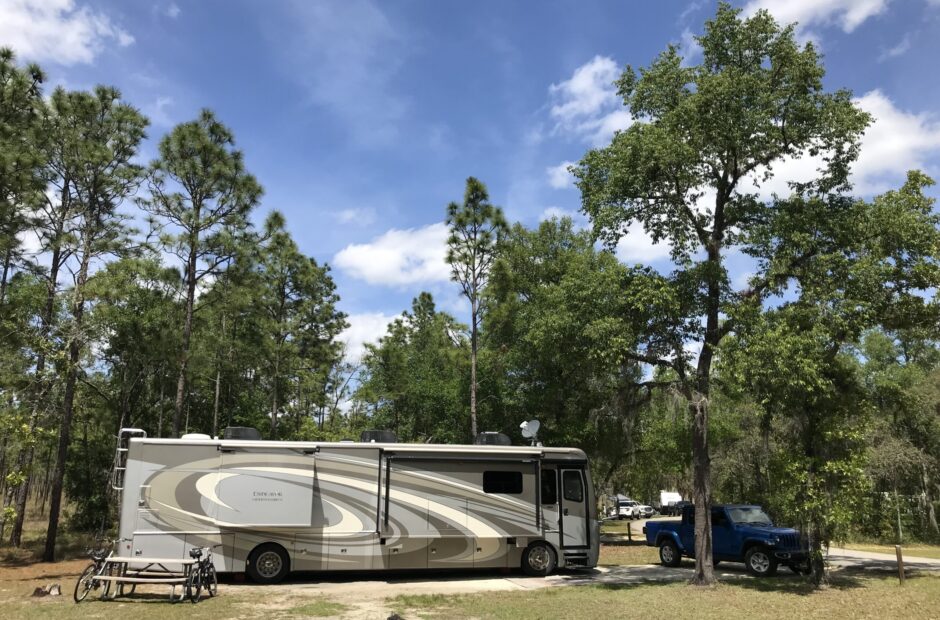Penn Lake Park Campground, Marathon, Ontario, Canada
Now to Him who is able to do immeasurably more than all we ask or imagine . . . be glory . . . throughout all generations, for ever and ever! Amen! Ephesians 3:30-21
After two event-filled days, we thought a nice visit to the Neys Provincial Park was just the ticket. This Park is north of us, whereas Pukaskwa is south – both about the same distance away.
Their website talked about a couple of easy to moderate short trails and a former POW Camp, which seemed suited to us today.

We began at the Visitor Center. As with most, they had taxidermied animals and furs about. One unique thing that I have no record of for some unknown reason, was a working fog horn in a box. It was a big black box with two brass holes on one end and a lever. There was a sign that said to ask first, so Blaine did, and then pulled the lever a couple of times, making this very loud foghorn sound! They would manually pull the lever on the tip of an island when conditions were foggy. Bet that guy was glad when fog horns became automated.
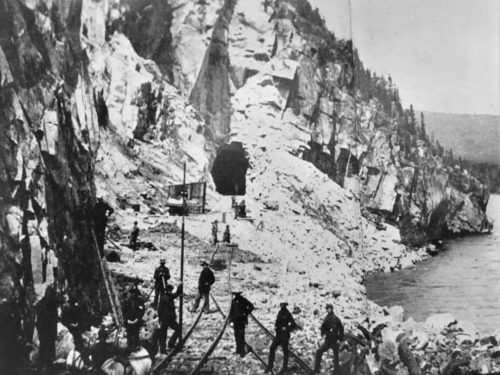
The Jackfish Tunnel, CPR Mainline.
That’s all I got on this one

The Red Sucker Trestle
110′ high, 900′ long
No word on when it was built, but I’m assuming it was during the 1880’s.
From 1941-1946, this Park area was a WWII German POW Camp.
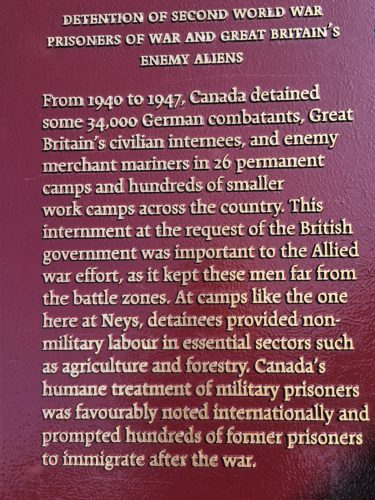
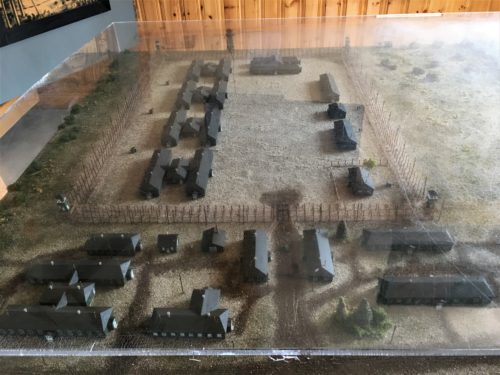
A scale model of the former POW camp.
There’s little or no evidence remaining, but they have this entire brochure talking about it, and there was a model and some pictures, etc. in a corner of the room. Here are some excerpts from the brochure:
The Canadian Department of National Defense has released very little primary documentation and thus much of the history is conjecture.
…in September of 1939, the Canadian government agreed to support the British Commonwealth in its battle against the Axis forces. From the outset of the war, Britain faced the issue of overflowing POW camps. The British government was concerned that prisoners would escape and compromise the nation’s defenses at home. For that reason, Canada initially greed to house approximately 6,700 German prisoners who arrived in Halifax in June of 1940. (there were) 26 major POW camps across the country.
Twenty-two buildings were built on the site in addition to four guard towers and three rows of three meter high barbed wire fencing. The camp was self-sufficient and generated its own energy with an on-site gas generator.
On January 25, 1941, the first trainload of German prisoners of war had arrived. It didn’t take long for the camp to fill to its capacity of roughly 650 prisoners.
Several POWs constructed intricate artwork such as ships in bottles and various sculptures and paintings. (They) were also permitted to use the camp library to complete correspondence courses with the University of Saskatchewan.
(How in the world did that work in the early 40’s??)
It’s no secret that the Germans held in Canada’s POW camps were treated far better than many other POWs elsewhere in the world. Prisoners were given three square meals a day, played a multitude of sports, wore their service uniforms on Sundays, held rank inside the camp, and were treated by their own doctors at a prisoner-run medical facility within the barbed wire fences. In later years, prisoners were permitted to leave the confines of the barbed wire fences to work as timber men for the Pigeon River Timber Company. Canada lost many workers to the war effort, particularly in the agricultural and logging sectors. Lumber companies found it difficult to meet the demand for their product with so few men. This labor shortage prompted the Canadian government to employ prisoners of war. Prisoners of war were paid $.50 for every cord of timber cut. The money was given to the prisoners upon their departure in 1946.
(In a nearby POW camp) Roughly 28 German POWs had successfully designed a massive tunnel system which opened outside of the confines of the camp. The prisoners used stolen timbers from the floors of the building to hold up the walls and ceilings of the sand tunnel. Prisoners made shovels out of frying pans and kitchen utensils candles out of kitchen grease, and had even fashioned a ventilation system by creating tubes out of used milk cans. The camp orchestra played to hide the noise of construction, and food rations were stored at the end of the tunnel for the planned escape. The escape was scheduled to take place on April 20, 1941 (Hitler’s birthday), but melting snow and torrential rains created flooding and risked exposing the tunnel. The prisoners met and decided to escape two days earlier on April 18th. While six escapees had successfully evaded capture, many of the 28 escapees were caught almost immediately. Two prisoners were shot and killed, while another two were injured. Five days later, two prisoners were found in Medicine Hat, Alberta. Finally, the last four POWs were caught just outside of Heron Bay just as the RCMP (Royal Canadian Mounted Police) were about to withdraw their search parties.
The Canadian Government was extremely embarrassed about the escape, especially the fact that four prisoners of war managed to evade a one-week search conducted by the RCMP. Newspaper articles and firsthand accounts are the only sources of information available regarding the Angler escape.
After this escape, the Angler Camp was shut down and prisoners were relocated, some to Neys.
Sounds like the inspiration for Hogan’s Heroes to me! 😊
Time to get outside and find the 1.25 mile Lookout Trail where there promises to be “…some spectacular vantage points overlooking Lake Superior. Sturdy shoes are recommended.”

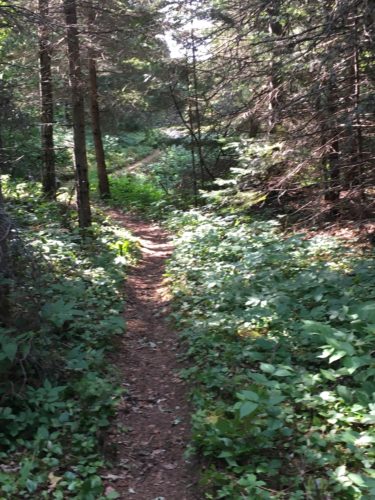
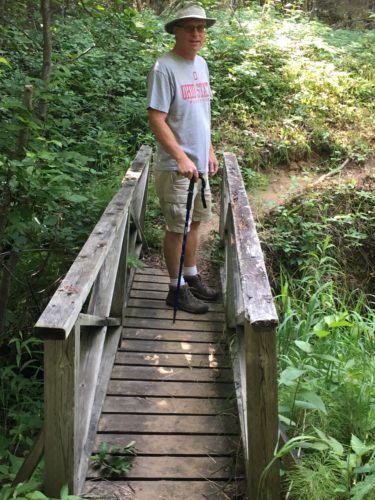
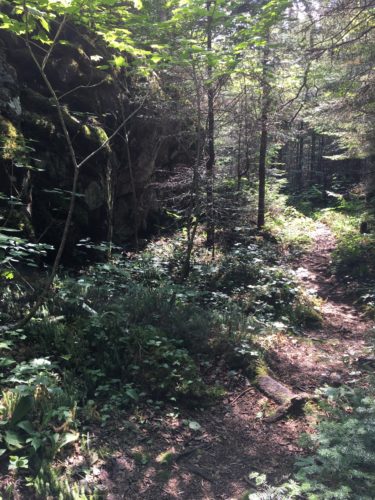
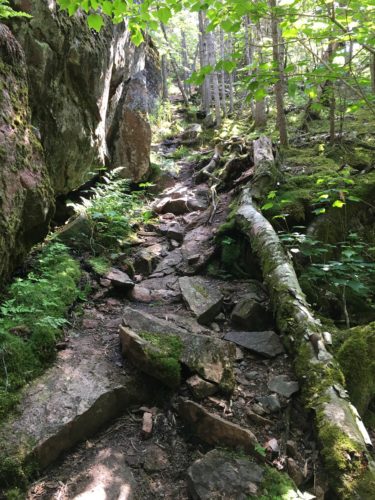
Yeah. That’s the trail.
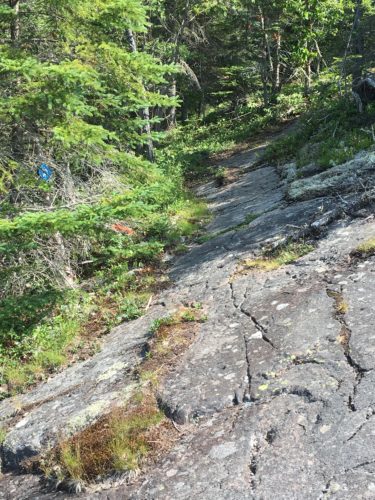
And this . . .
At least here you can see the trail marker hiding in the trees.
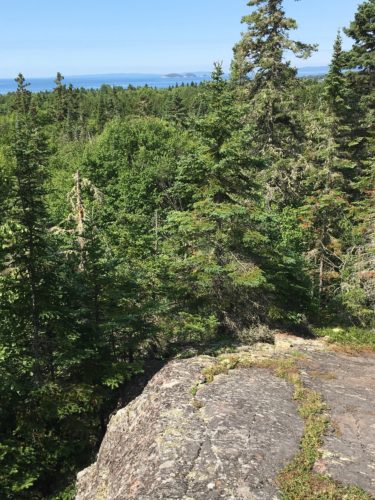
A glimpse before we get to the actual viewing spot.
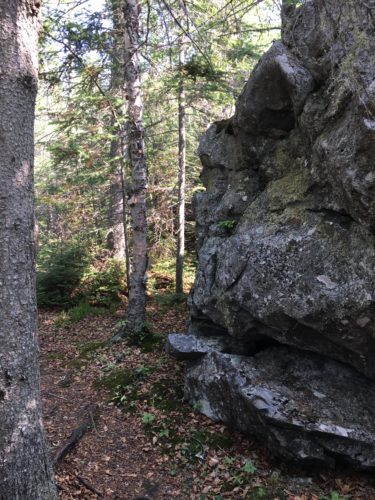
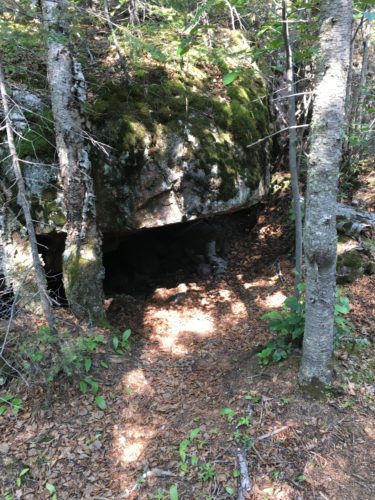
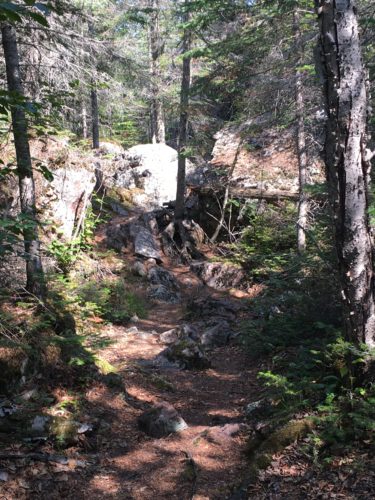
There were some nice views (not really spectacular compared to some we’ve seen), and we certainly did need our boots! And once we got to the viewing spot, we had a time trying to find where the trail went across that big ol’ rock!

Here’s the view spot!
Lovely!
And no, I don’t mean Blaine . . .
Although . . . .
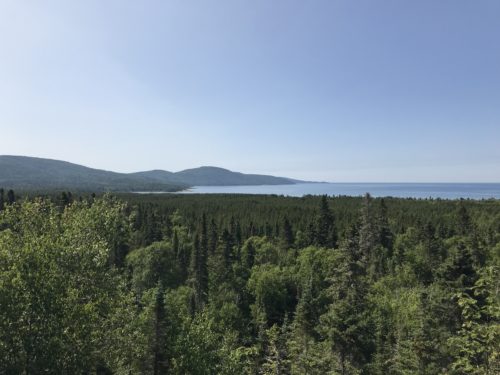

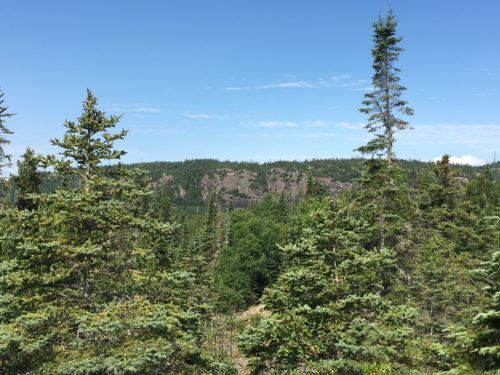
Behind us.
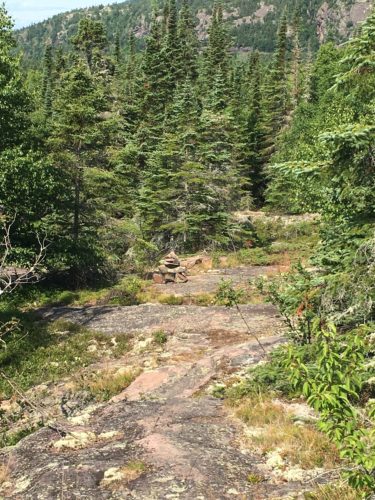
We saw this cairn which usually means ‘go this way’.
But this one didn’t.

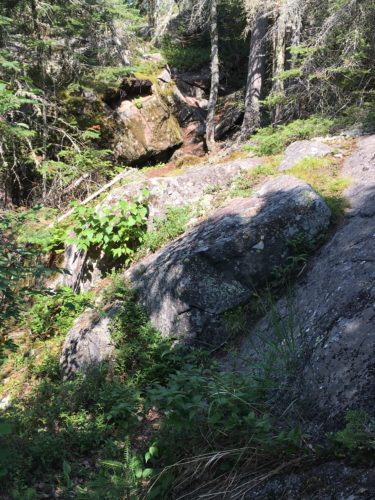

Blueberries!
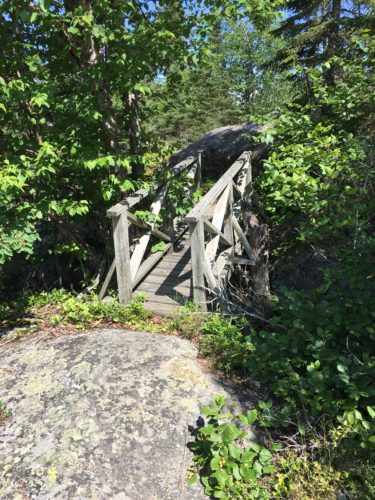

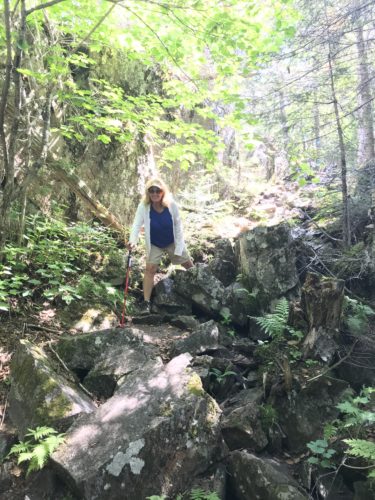
It’s lunch time and we went in search of a good place to partake of our peanut butter and jelly sandwiches. We found a picnic area that had oodles of pluses!
We had to sit on top of the table in order for me to see over the brush, but we had a river, Lake Superior, mountains, islands, wildflowers, butterflies, Canada geese, seagulls, a fairly large ‘fishing’? pleasure? boat on the Lake, sun, a slight breeze and . . . . a train! Who could ask for anything more? Well, we didn’t ask, but we received – – red raspberries! Sooooo delicious!! There were no more to be found, though. Darn!

I can’t remember the name of this river.
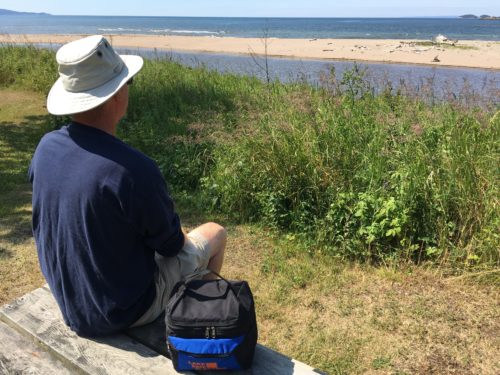
River, sand, Lake Superior
with seagulls and geese sharing the sand in between.
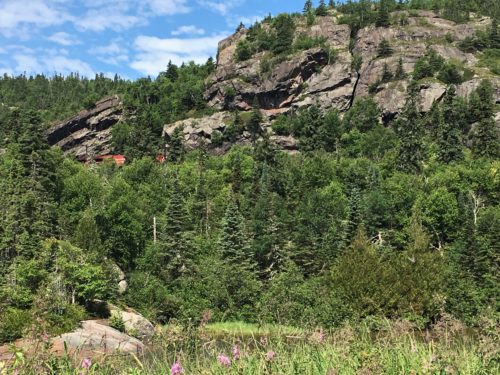
She’ll be comin’ ’round the mountain when she comes!

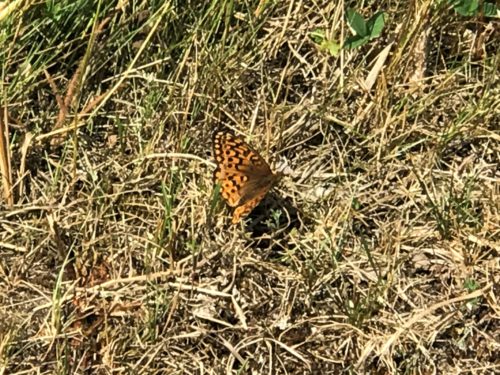

There’s Blaine, picking those raspberries!

Yum, yum, yum, yum, YUM!
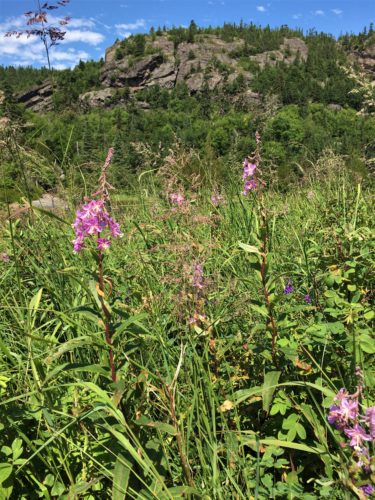
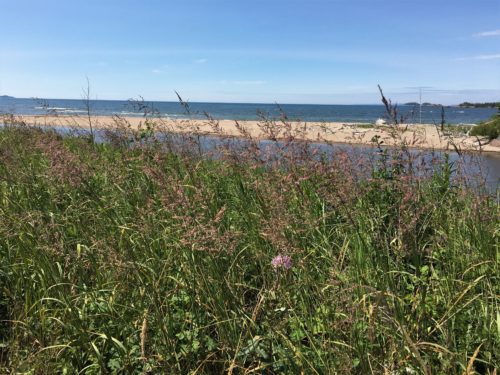
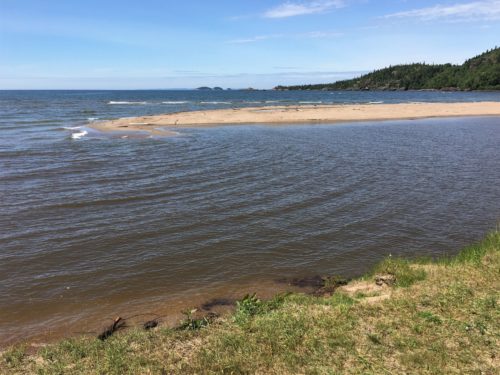
Where the river meets the Lake
We’re walking off lunch (at least part of it) on the Point Trail. It’s a little under a mile and ends on top of a rock that’s covered with boats left from the 1940’s when they were used by the POWs for logging.

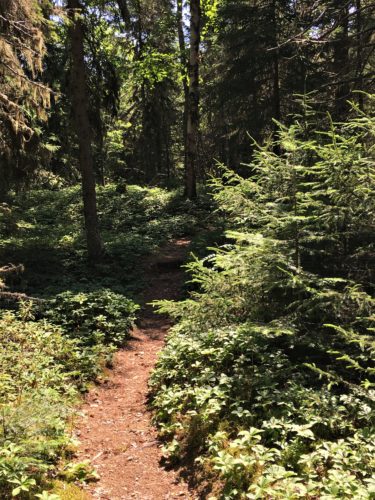
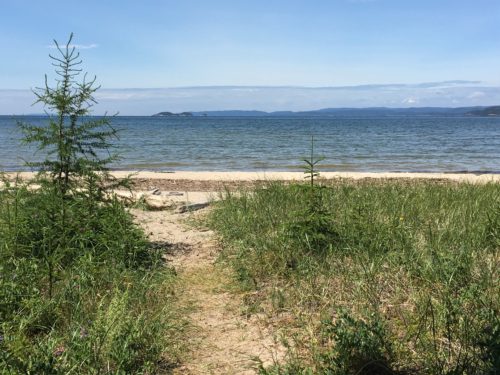

We had to walk a beach before we got to The Point.
It’s the first ‘dirty’ beach we’ve seen on Lake Superior.
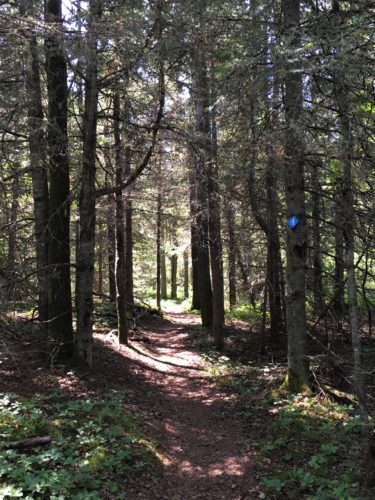
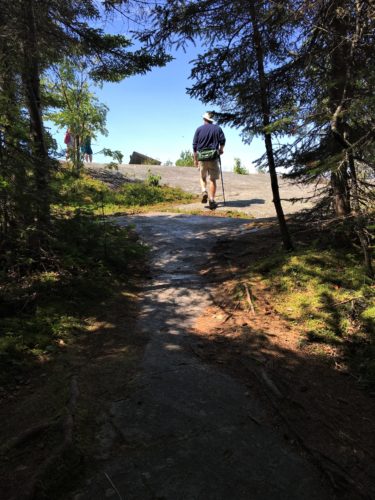
Up there’s The Point.

And look! Another train!


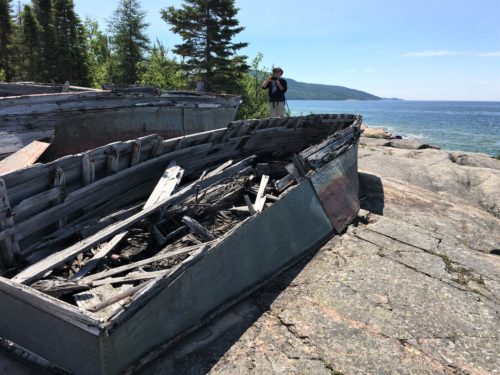
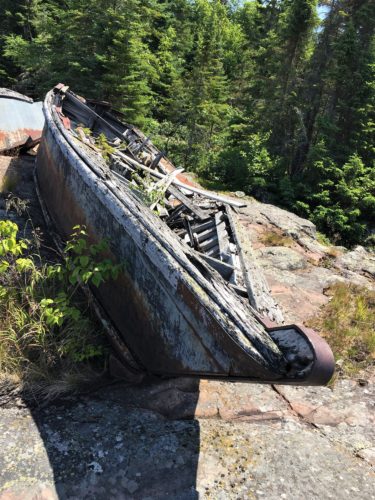
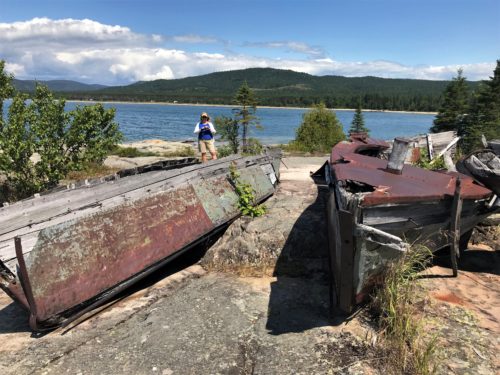
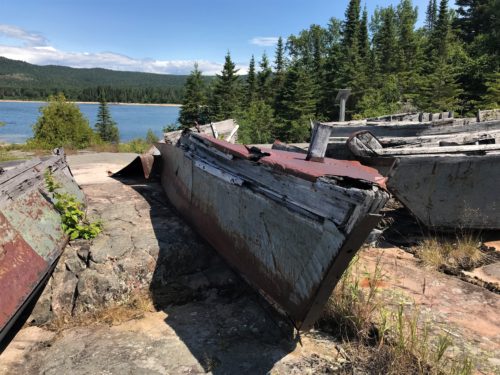
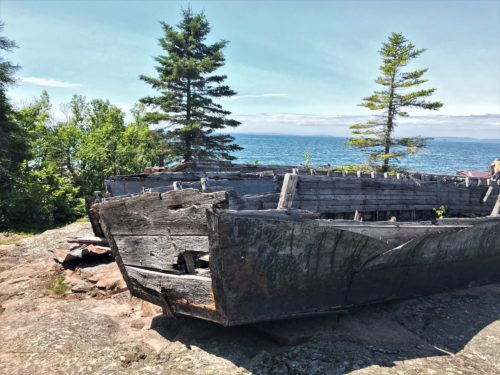

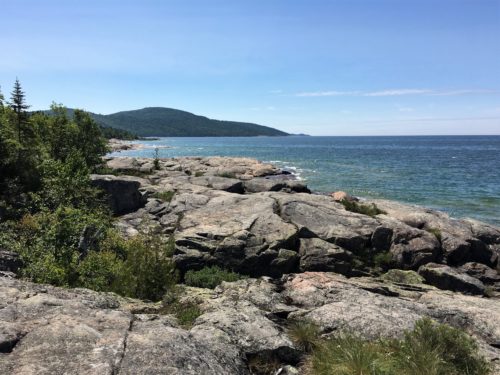

Many of the trails here connect to each other and from this point, we continued on the Under the Volcano Trail. It’s supposedly .62 miles long, but I’m not sure how anyone measured it. It’s all rock along the shoreline. They encourage you to explore all over them. There are signposts with long-ago lost signage, but at least the posts are there to help guide you. It was a fun and beautiful “trail”!

That’s a sea kayak. They’re designed for choppy waters.

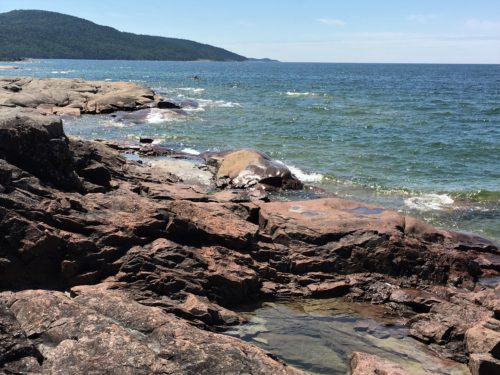
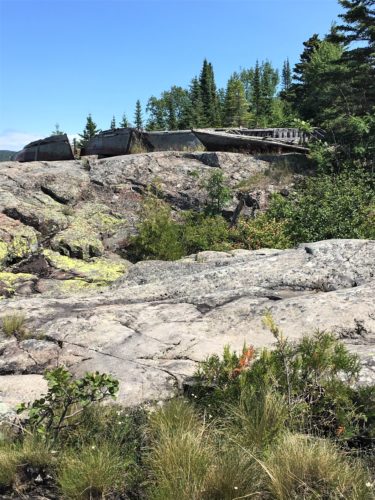
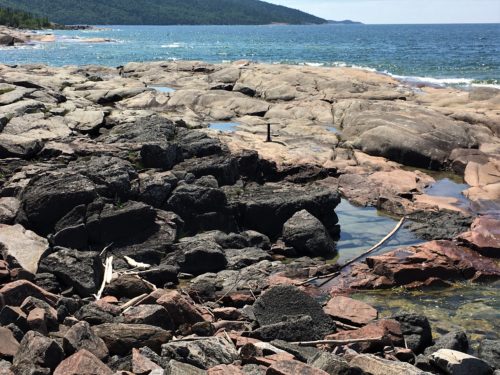
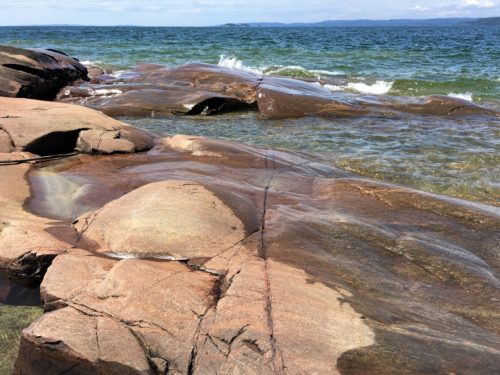
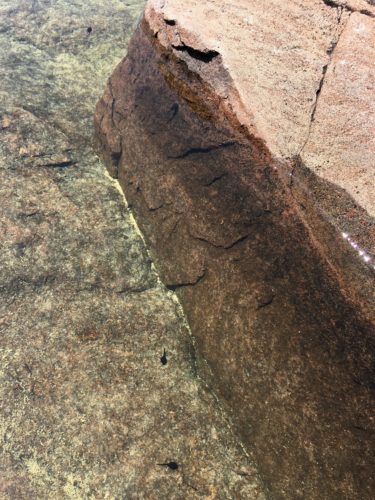
First of all, that’s water. It really is that clear!
Second, those black dots with tails seemed to be some kind of tadpoles. Weird because there were no frogs around, unless they take off for the woods?
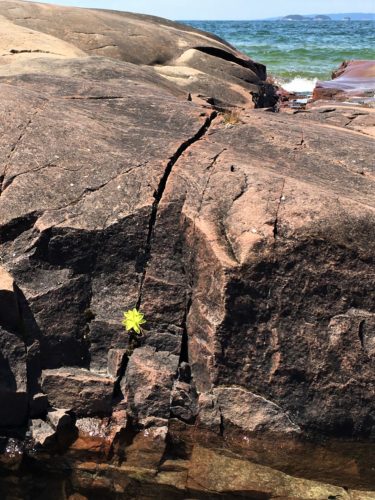
A star!
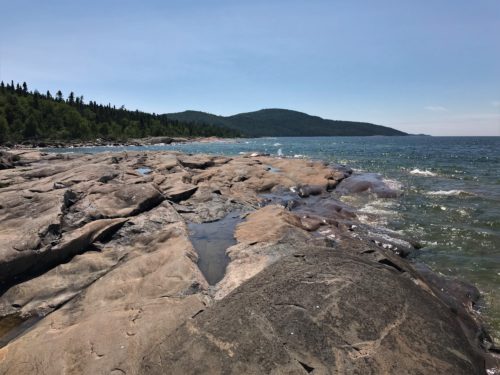
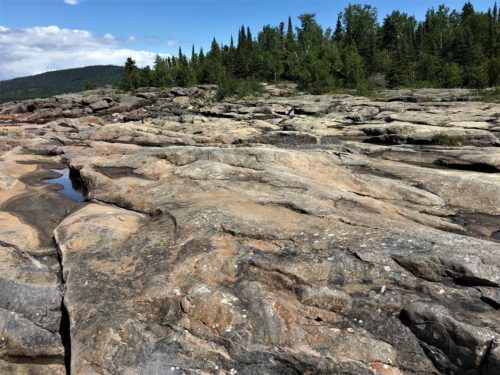


A sea turtle! : )

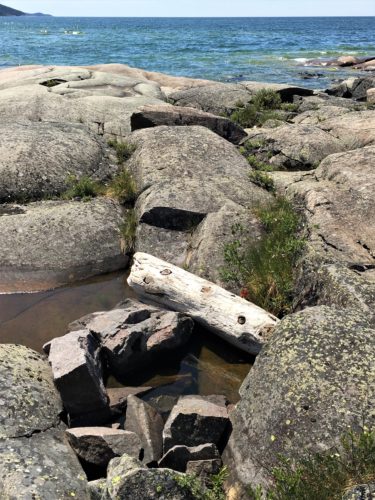
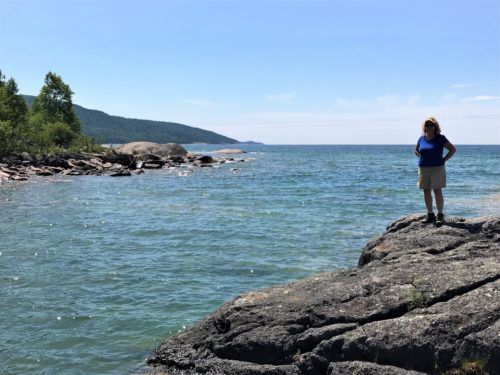

Walking around, we discovered that these red flowers were once white! We saw other bushes in the process of changing color. Really cool!
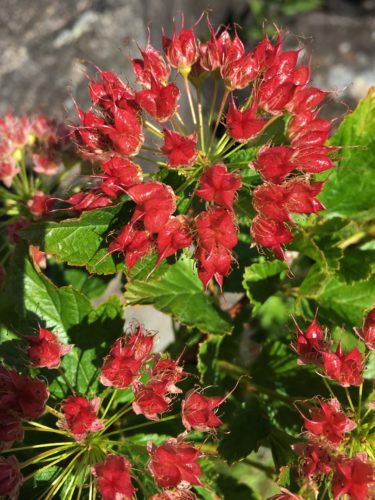
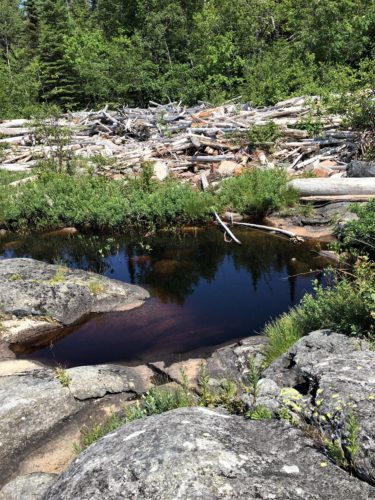

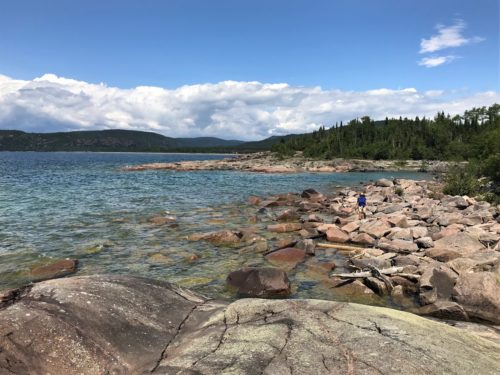
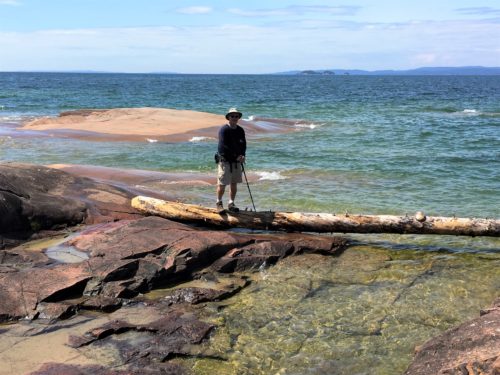
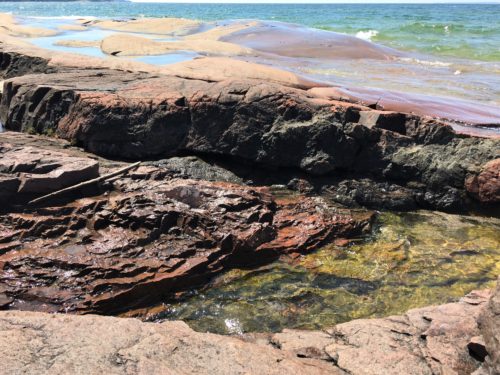
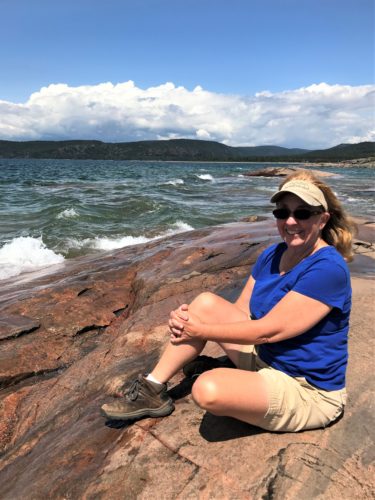


The balancing act.
I’m not that gifted, so I went around. : )
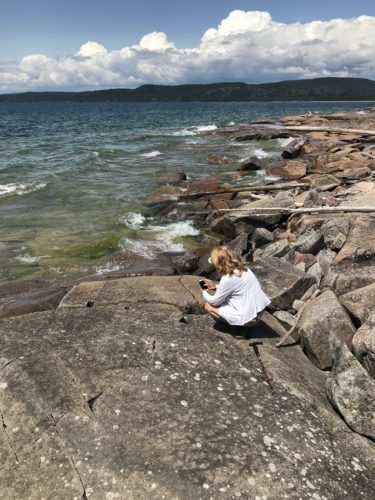
Stopping to take a picture. . .

I like it!
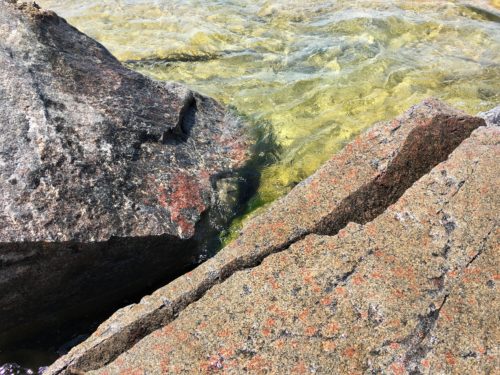
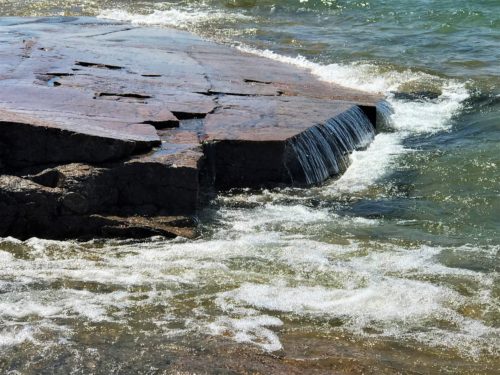


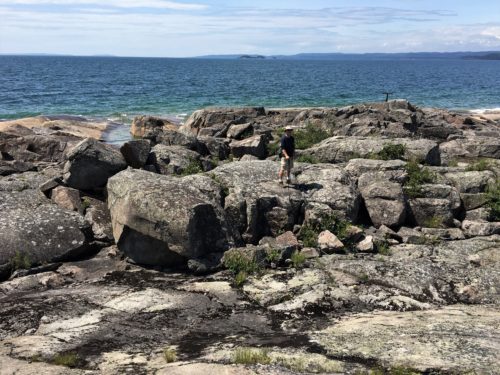
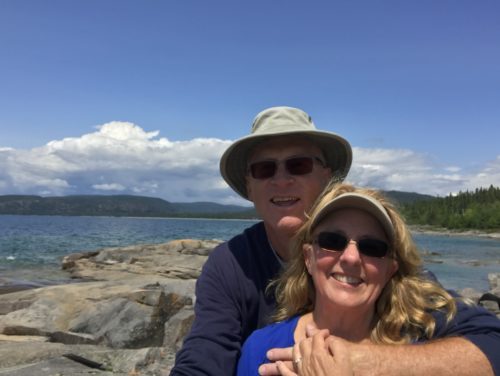
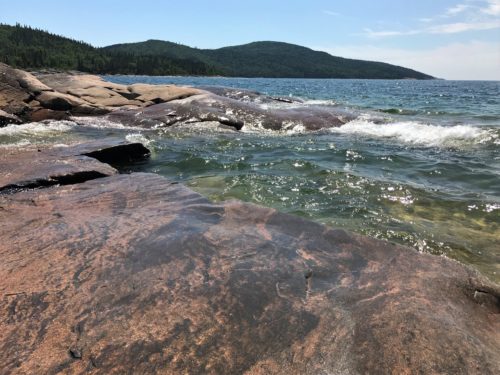
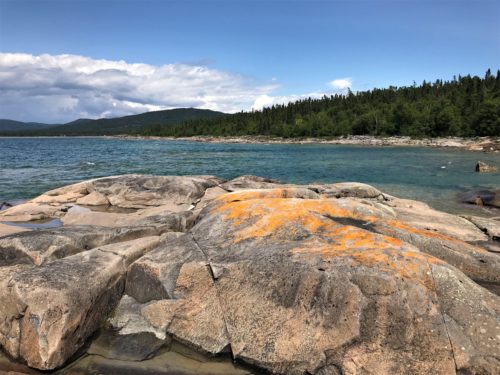
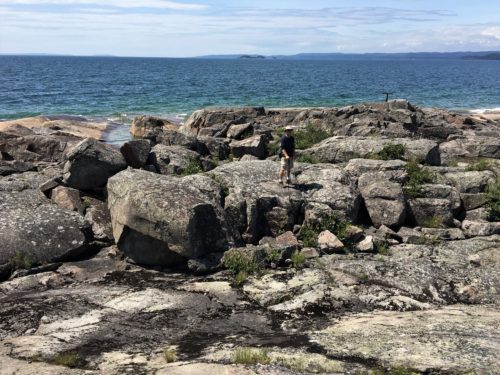
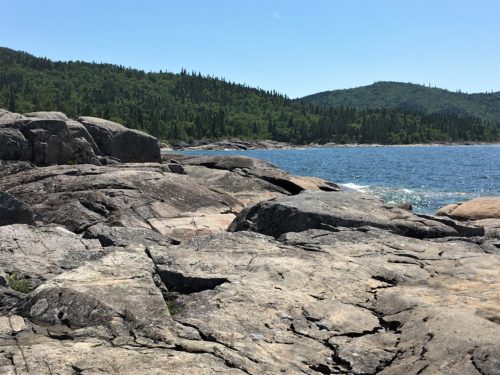
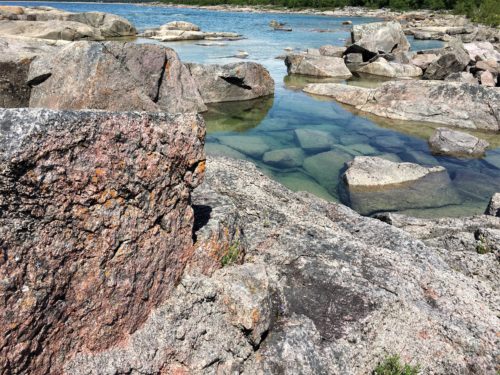

I’m not napping on the rock, but that’s not a bad idea!
I’m actually down there taking pictures. : )

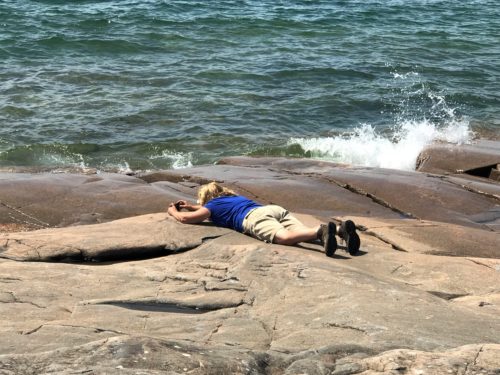
Blaine seemed to find it amusing that I’d stretch out like that.
It was comfortable – the rock was smooth and warm, the sun was warm, the waves were crashing . . .
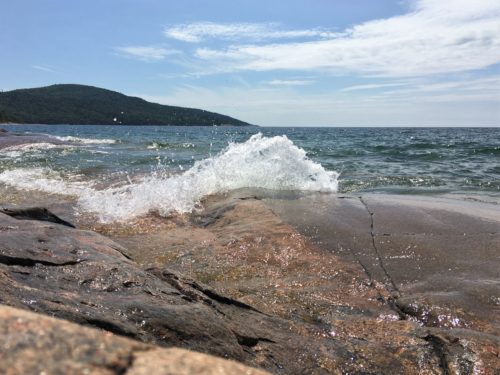
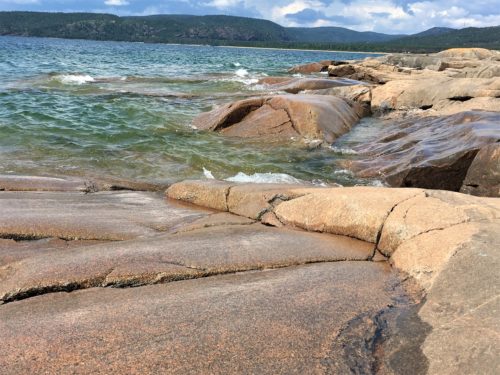
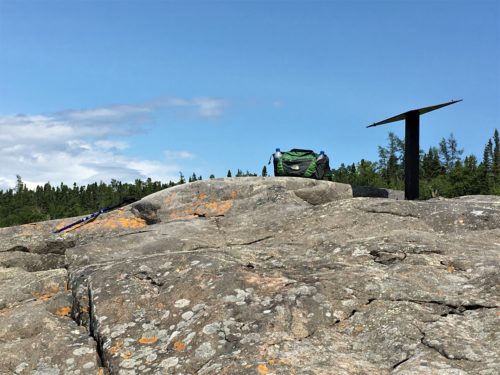
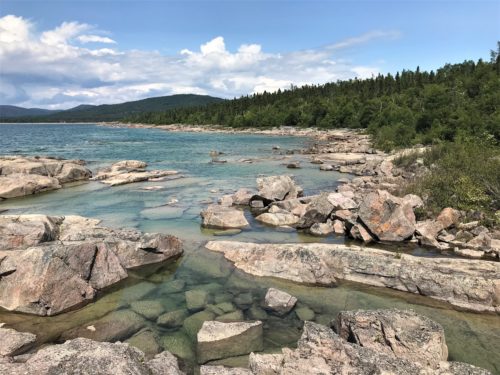
Sigh . . . . it’s time to go . . .
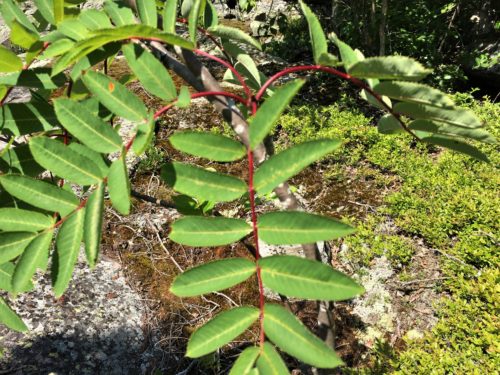
Isn’t this tree interesting?
It has a regular looking trunk, and green leaves, but the stems are bright red!
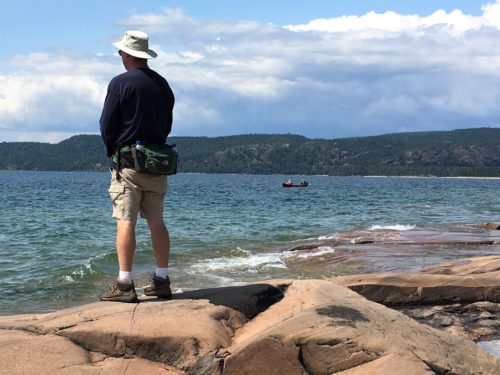
I took this picture so it wouldn’t be obvious I was taking a picture of the couple in the canoe.
The water today just didn’t look safe for a canoe.
We hoped they made it okay.
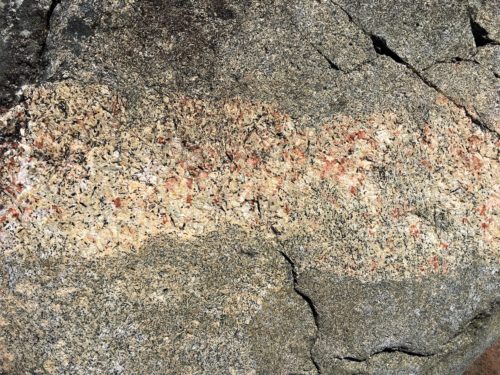
It doesn’t show so much in the picture, but there was this pretty pink vein running through the rock.
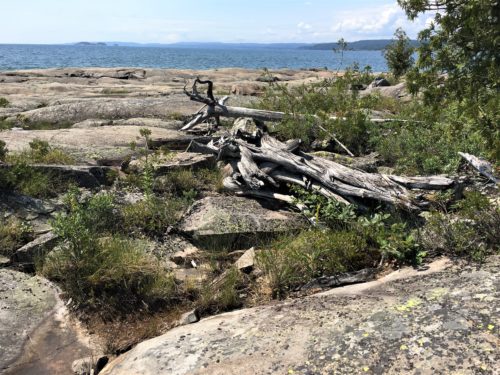
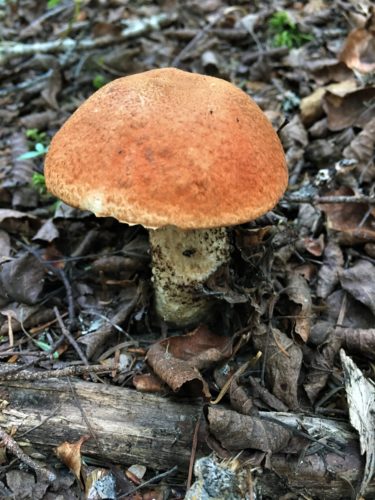
We’re not sure we made it to the end, but we went as far as we wanted to go, and not a soul followed us, or passed us on the way back.
As we drove back home, we discussed dinner options and decided that Chinese carry-out sounded good. It’s the number one rated restaurant in Marathon. But then again, it’s practically the only one. We caught a train just before we arrived. They sure move fast through town!

We got there five minutes before they opened and had to wait for them to unlock the door, but even then, we only had a 15-minute wait for dinner. The woman at the counter was so busy, I didn’t get a chance to ask where they got their supplies from. As we waited, I discovered the most unusual flowers in their flower bed!
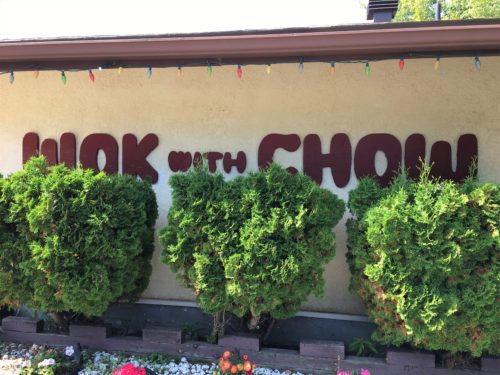
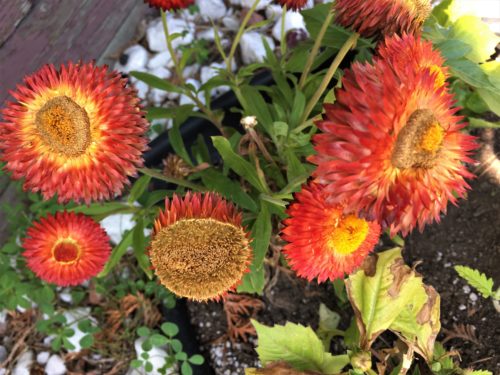
These flowers are all in different stages. So cool!
Our God is an awesome God!
And dinner was pretty good! General Tsao’s, eggroll and rice. How do they manage to pack so much food into their containers???

